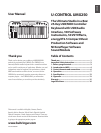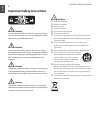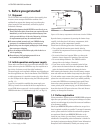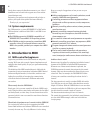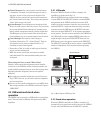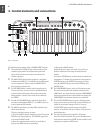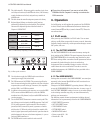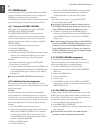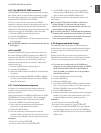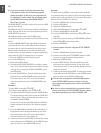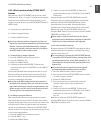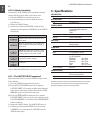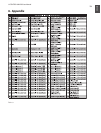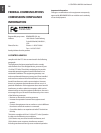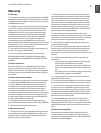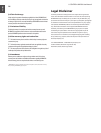
ENGLISH
U-CONTROL UMX250 User Manual
4
listed, please contact the distributor nearest to you. A list of
distributors can be found in the support area of our website
(www.behringer.com).
Registering your purchase and equipment with us helps us
process your repair claims quicker and more efciently.
Thank you for your cooperation!
System requirements1.4
For USB operation, a current WINDOWS PC or MAC with a
USB connection is sufcient. Both USB 1.1 and USB 2.0 are
supported.
The UMX250 supports the USB MIDI compatibility of
◊
WINDOWS XP, Vista and MAC OS X operating systems.
The UMX250 can also be operated as a stand-alone MIDI
◊
controller with no PC connected. Software control via
MIDI is also possible, provided your computer has a MIDI
interface.
Introduction to MIDI2.
MIDI control for beginners2.1
Application possibilities for the UMX models are truly wide-
ranging. We’ll start with a couple of general explanations and
examples that should quickly let you get a good understanding
of MIDI basics.
The denition of the MIDI standard began in 1982 with the
cooperation of various international companies (MIDI: Musical
Instrument Digital Interface). At that time, musicians were
looking for a possibility of managing the communication
of electronic musical instruments of different makes with
one another.
What exactly does the UMX250 do?
Simply put, this is a remote control for all kinds of MIDI equip-
ment. Using the faders, rotary knobs and buttons, the foot pedal
and the keyboard, an entire array of control instructions can be
generated, which in turn can control the most diverse functions
of external devices.
What kinds of equipment can I control with the UMX250?
You can basically control any device supporting the MIDI
format. Both hardware and software MIDI devices are controlled
in exactly the same way. The only difference is in the wiring.
Here are a couple of suggestions on how you can use your
UMX250:
Editing sound parameters of (virtual) synthesizers, sound
◊
samplers, GM/GS/XG sound generators.
Controlling parameters on effects equipment/software
◊
plug-ins such as effects processors, reverbs, compressors,
equalizers.
Remotely controlling software mixers (volume, panorama,
◊
mute functions, etc.).
Remotely controlling transport functions (playback,
◊
forward, stop, etc.) on sequencers, hard disk recorders,
drum computers, etc.
Live control of volume and sound parameters on expanders
◊
Remotely controlling groove boxes, step sequencers, MIDI-
◊
generators and other “live” software
Program changes and volume control on sound generators
◊
(just like on a master keyboard)
Can be used by band keyboardists, solo entertainers,
◊
organists, electronic music performers, DJs, sound engi-
neers, home/project studio owners, theater technicians, etc.
And how does it work?
Remote control is realized by assigning the individual control
elements of the UMX250 to individual MIDI parameters.
Whenever one of these control elements is operated, the
UMX250 generates the control data assigned to this control
element, which are then transferred to external devices over
a data link. Thus, for example, the VOLUME/DATA fader
is factory-set to send data controlling the volume level of a
channel.
The data connection is usually a standard MIDI cable with a
5-pin DIN plug on each end. Such cables should not exceed a
length of 15 meters. With the UMX250 there is one more data
connection available: the USB cable to the host computer. Here,
the cable should not exceed a length of 5 meters.
The data transmission takes place over 16 channels.
The control data generated by the individual control elements
are also called MIDI messages, which can be divided into
3 major groups:



